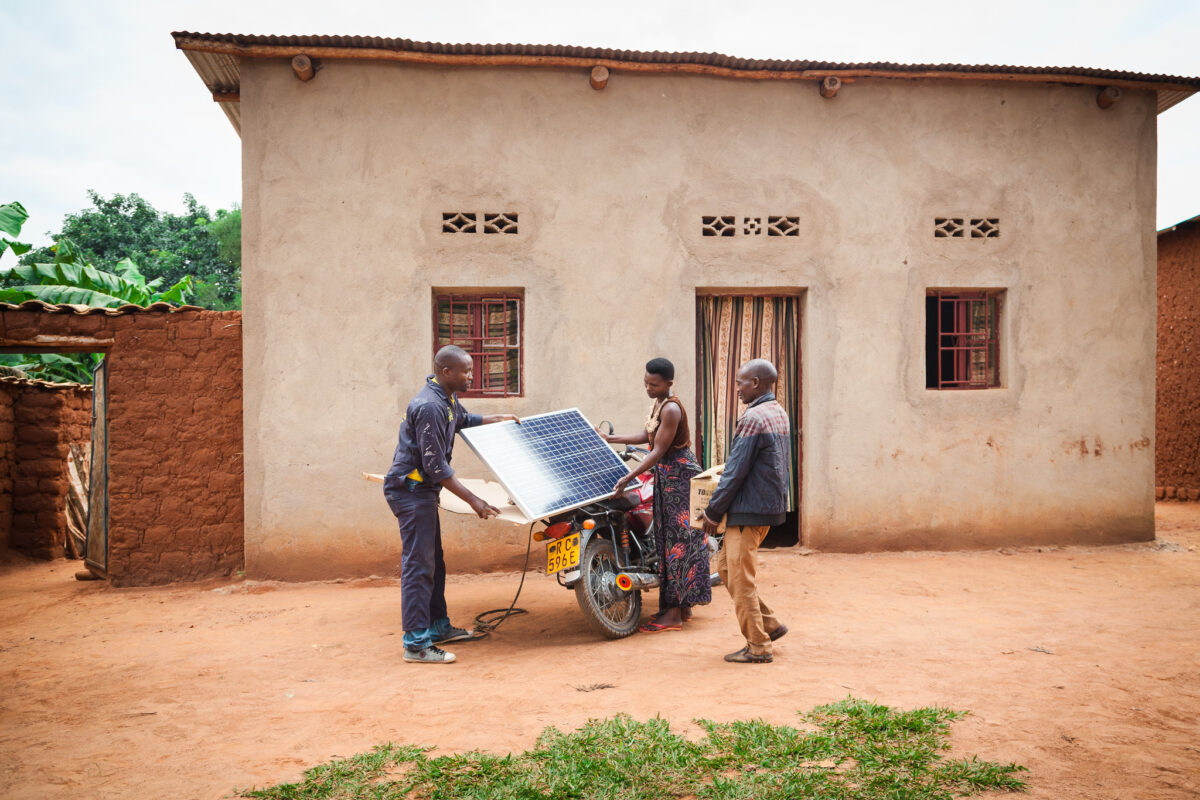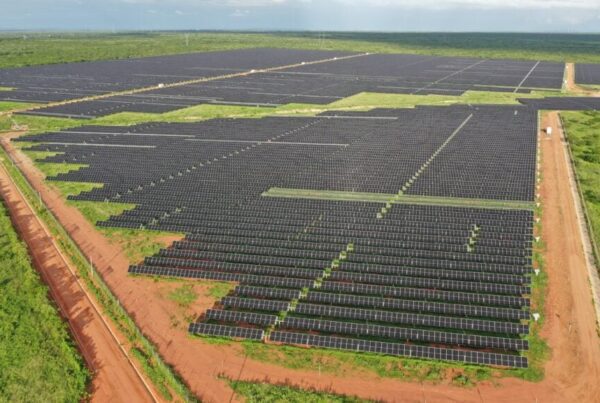
However, the report points out that, in the last few years, off-grid solar systems have been an essential component for delivering electricity access to those lacking power. The ESMAP uses a “multi-tier framework” model to categorise access to electricity, with “tier one” consisting of access to basic electricity services, such as charging phones, for a limited amount of time each day. “Tier two”, meanwhile, consists of “additional appliances”, and a household must have access to at least four hours of electricity per day, including at least two hours in the evening, and access to a power generation facility of at least 50W.
The graph above demonstrates how off-grid solar systems have helped provide access to electricity, especially for people in or below the tier one level. Perhaps most strikingly, the number of people in tier two or above with such access has seen the largest increase since 2020, with the number of people using off-grid solar systems in this tier more than tripling between 2020 and 2023.
Indeed, the ESMAP-GOGLA report notes that off-grid solar can also be an important part of small-scale commercial work. A household in or above tier two of electricity access may not struggle to meet their domestic energy needs but could benefit from additional electricity to support business developments, which off-grid solar systems could certainly provide. The report notes that, in 2023, over three million people worldwide were using solar home systems, such as rooftop panels, to “run an enterprise”.
The report also points out that, in a survey of over 79,000 off-grid people across 31 countries, 86% of solar water pump users experienced increased productivity, while 60% expanded cultivated areas, leading to an increase in income for 88% of these users.
Market growth and market contraction
The report’s authors frequently discuss financial benefits and trends in its pages and note that, overall, there has been an increase in the amount of money being invested in the off-grid solar sector. The ESMAP-GOGLA report notes that, between 2018 and 2022, the size of the global off-grid solar products market almost doubled, from US$2.3 billion to US$3.9 billion.
This impressive growth happened in spite of a downturn between 2020 and 2021, which the report highlights coincided with the height of the COVID-19 pandemic, where many industries contracted. In the years following the COVID-19 pandemic, the number of off-grid solar projects jumped to record figures, exceeding 50 million in 2023 for the first time.
The majority of these products are solar energy kits (SEKs), which ESMAP and GOGLA define as “bundled, pre-packaged systems that typically consist of a solar panel, battery and charge controller”, offering a flexible solution to generating power. Even during the COVID-19 downturn, annual sales of such products did not fall below 30 million in the six years between 2018 and 2023, as shown in the graph below.
However, the graph also demonstrates that 2023 was a poor year for off-grid solar financing in general, with both the sheer number of off-grid solar products sold and the size of the market as a whole shrinking slightly from 2022. While the general trend remains positive—the global market size still increased by 3% from 2019 to 2023—the most recent figures are discouraging, with the market size contracting by 3% between 2022 and 2023.
The ESMAP-GOGLA report suggests that this most recent trend is tied to short-term economic changes, rather than being the herald of a long-term decline in appetite for off-grid solar systems. The report notes that the market is still 15% larger than during the COVID-19 years, “underscoring its resilience”. Falling revenues can be attributed to rising local prices making it harder for people to purchase as many products and a 3% decline in prices in US dollar terms, meaning manufacturers and retailers experienced narrower profit margins in 2023 than in 2022 despite largely stable raw sales figures.
A call for finance
However, the report points to a different economic trend as a cause for more concern in the long term: a lack of new investment in the off-grid solar sector. While the solar sector is expected to dominate the world’s clean energy investments—figures from the International Energy Agency (IEA) suggest that solar alone could see a record US$500 billion of investment this year—ESMAP and GOGLA are keen to ensure that the off-grid sector is not left behind.
The report notes that, while investment into off-grid solar reached a record high of US$1.2 billion between 2022 and 2023, US$21 billion of new investment will be needed to provide off-grid solar access to 398 million of the 660 million who will lack electricity access by 2030. This does not include a further US$74 billion in adjacent technologies that ESMAP and GOGLA call for, including solar water pumps and solar systems for small-scale businesses in or above tier two of the electricity access rankings.
The report notes that public funding from international companies and organisations could be a key contributor to this financing gap. It draws attention to initiatives such as the Global Energy Alliance for People and Planet (GEAPP) and the Green Climate Fund (GCF), which have each committed US$10 billion to electrification and renewable energy projects around the world.
Indeed, the World Bank has consistently increased its annual commitments to off-grid solar financing, as shown in the graph below. The bank is set to invest over US$600 million in the sector this year for the first time.
However, the continued reliance of investment from wealthy backers—the GEAPP for one counts the Bezos Earth Fund among its founders—who are often not based in the countries that could benefit the most from off-grid solar is a concerning state of affairs. The ESMAP-GOGLA report states that, of the 685 million people without access to electricity in 2022, 571 million were based in Sub-Saharan Africa, a figure that has only declined marginally from the 535 million people in the region without electricity access in 2005. Making countries in these regions reliant on investment from overseas funds may improve access to electricity, but will not necessarily deliver energy independence.
For instance, the ESMAP-GOGLA report states that, in 2023, investment in off-grid solar in the form of non-local currency accounted for 65% of all investment, compared to just 35% from local investors. Even this imbalanced figure is an improvement over previous years, which saw non-local currency account for 90% of off-grid solar investment in 2022 and a mammoth 99% in 2019. While this latter figure is skewed by the general economic uncertainty surrounding the COVID-19 pandemic, the general trend remains clear.
The report draws attention to a number of international efforts to try to bridge this gap between wealthy overseas backers and countries and communities that could benefit from greater access to electricity. These include the World Bank’s Mission 300 initiative (M300), a collaboration with groups such as the African Development Bank to deliver access to electricity to 300 million people in Africa by the end of the decade.
“The industry has shown tremendous resilience in challenging macroeconomic conditions,” said Sarah Malm, GOGLA executive director. “Companies, investors, governments and development partners need to work together now to unlock the US$21 billion needed to create a financially sustainable off-grid solar sector, that can scale, serve the hardest-to-reach and help achieve energy access and climate goals and ambitious initiatives like M300.”






